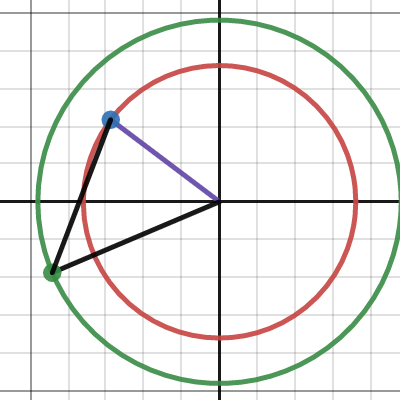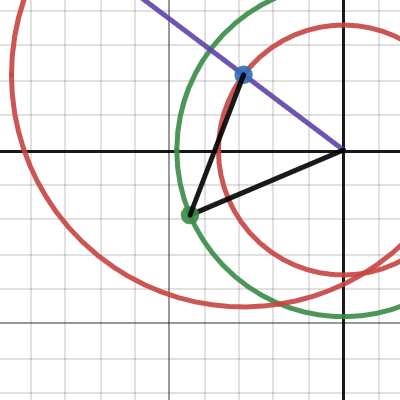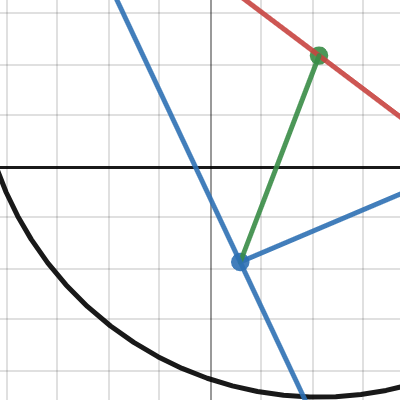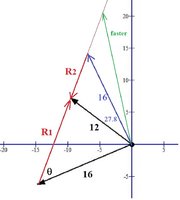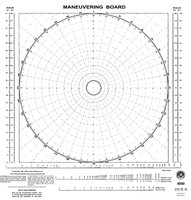Two ships leave port at 9 a.m. One travels at a bearing of N 53 degrees W at 12 miles per hour, and the other travels at a bearing of S 67 degrees W at 16 miles per hour. 1) Approximately how far apart are the ships at noon that day; and 2) what bearing and ETA should the faster ship set to intercept the slower if the slower continues on its original course and speed?
The first part is easy to solve with the Law of Cosines. First, determine the vector magnitudes: 3 x 12 = 36 and 3 x 16 = 48. Then determine the enclosing angle: (180 - 143 = 37) + (270 - 67 - 180 = 23) = 60 degrees. Then, a2 = 362 + 482 - 2(36){48)cos 60 = 1872. Therefore, the distance between the ships is the square root of 1872: 43.27 miles.
The next part is not so easy. I can determine the X,Y cordinates of the two ships by converting from polar to Cartesian coordinates; slower (-28.75, 21.67), faster (-44.18, -18.76), but I am at a loss how to calculate the bearing and magnitude of the faster vector and the magnitude of the slower vector. Perhaps there isn't enough information to set up an appropriate equation, but I doubt it. Naval navigators must be able to quickly solve this problem. Any suggestions how to approach part 2 will be greatly appreciated.
The first part is easy to solve with the Law of Cosines. First, determine the vector magnitudes: 3 x 12 = 36 and 3 x 16 = 48. Then determine the enclosing angle: (180 - 143 = 37) + (270 - 67 - 180 = 23) = 60 degrees. Then, a2 = 362 + 482 - 2(36){48)cos 60 = 1872. Therefore, the distance between the ships is the square root of 1872: 43.27 miles.
The next part is not so easy. I can determine the X,Y cordinates of the two ships by converting from polar to Cartesian coordinates; slower (-28.75, 21.67), faster (-44.18, -18.76), but I am at a loss how to calculate the bearing and magnitude of the faster vector and the magnitude of the slower vector. Perhaps there isn't enough information to set up an appropriate equation, but I doubt it. Naval navigators must be able to quickly solve this problem. Any suggestions how to approach part 2 will be greatly appreciated.

